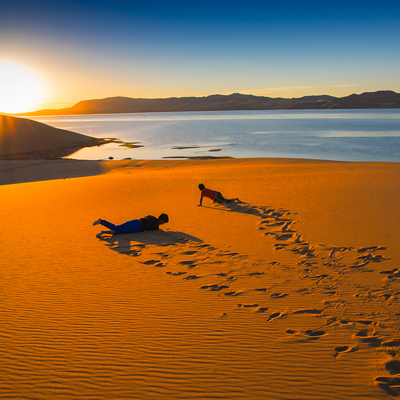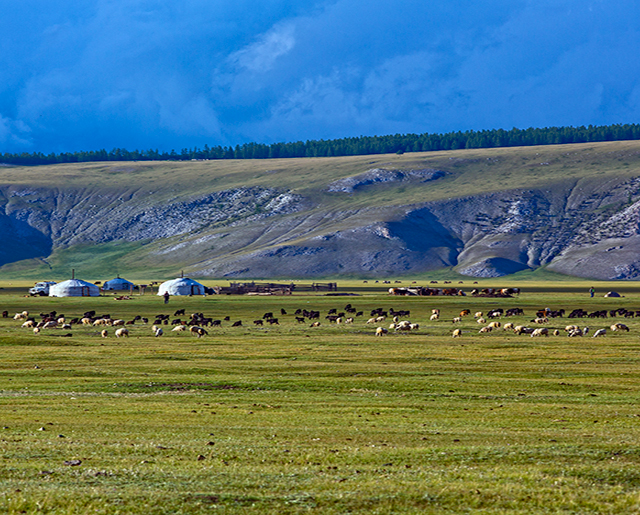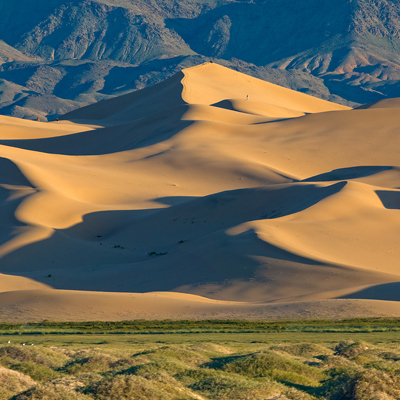
Awe-Inspiring Images Of The Gobi That Will Leave You Mesmerized
Awe-Inspiring Images Of Mongolian Gobi That Will Leave You Mesmerized Forever
We are hosting incredible desert images that are beyond beauty. Those which will grab your eyes and inspire you to go Gobi desert of Mongolia. These have been titled some of the finest works of photography by Amartuvshin.J and true way of expressing the indescribable beauty and rawness of our planet in its most splendid form. It heaven to the eyes. Let us take a look those stunning photographs along with story about nomadic people, stunning wildlife. You will find plenty of useful information covering all aspects of travel to Mongolia's Gobi desert.
About the photographer: Amartuvshin Jargalsalsaikhan, a photographer who lives in South Gobi province in Mongolia. He has been photographing for 8 years since he had graduated his University as a graphic designer.” I want to show my stunning Gobi to the people who can’t visit also wish to promote natural beauty to our young generation to get inspired them through my photoshoots”, he said.
Yol Valley/ Voliin Am – The Reasonable Travel Destination of Mongolia

One of the most popular destinations in the Gobi is Yollin Am canyon- Valley of Bearded Vulture which located in Gobi Gurvan Saikhan National Park.
Khermen Tsav - "The End Of The World" Named By Roy Chapman Andrews
Countless natural miracles are in the Gobi and one of them is Khermen Tsav, a magnificent canyon formed of red mud rocks. The first dinosaur fossil was found here and the scientists agree that some 200 million years ago the place was covered with an inner sea.

Ancient natural formations and structures of the Khermen Tsav, the main fossil site, vary in its shapes and form an image reminiscent of castles
Mongolia’s Gobi – The True Place To Live Off The Grid
The nomads who live in this area rely on the few natural elements the Gobi has to offer to sustain them. They truly live a rugged existence, living off the land, dwelling in traditional felt covered tent, yurt and relying on Mother Nature to provide. Their lives are admirably simple and hospitable. The Gobi Desert may be an incredibly rough place to live, but the people of the area will still provide as much hospitality as they can.

Mongolian Gobi is not just a desert, but it is known as its exotic lives, nomadic life have been continuing for centuries.
Gobi Desert Of Mongolia – Home To Stunning Wildlife
Some of the iconic species living in Mongolia's Gobi Desert, are the snow leopard, black-tailed gazelle, Gobi viper, jerboa, Gobi bear, argali wild sheep, Asiatic wild ass, Gobi ibex, wild Bactrian camel, and more. Here we show you some beautiful photographs of wild animals living in the Gobi.

The Gobi Desert frequently produces sand storms during the spring, which generally peak in April. The study goes on to show that most of southern Mongolia sees desert storms on an average of 20 days a year.

The wild sheep of Mongolia, known as “argali”, are the largest sheep in the world and carry the largest horns of all wild sheep species. There are two species of argali sheep in Mongolia; the Altai argali, and the Gobi argali.
Overland Adventure In The Gobi - Real Freedom In An Empty World
The best way to discover the huge desert of Mongolia is overlanding. If you want to get off the beaten track, then you will love Mongolia, including the Gobi too. You will drive through an unbelievably emptiness it is the part of your big adventure in Mongolia.


Another beautiful picture of Khermen Tsav, also the remote and the epic place of the desert. Reach here with only local travel exerts with experienced driver and a good car.
The Only Desert In the World that Freezes You In Winter
Have you been imagined that you are hiking on sand dune in the desert when the temperature drops to -40C?
The Gobi was described by Western explorer as “a waterless, treeless region that burns your skin in summer and freezes you to the bone in winter”. It is true and it makes Mongolian Gobi unique. Travel Gobi in winter and it would be your once in a life time experience.

Snow fall is generally very rare in the Gobi specially in the area of Sand dune skirts, when it is fully covered by snow the sand dune can be seen incredibly beautiful.
Mongolian Gobi – The Paradise For Night-Sky Photographers

Visit Nomads and Ride Camels – At Khongor Sand Dunes
Spending Your Time With local Nomads, learn their culture, try camel ride, climb the highest sand dune, listen its singing and relaxing in charming nature are the must do things of your Mongolia desert adventure.

The Flaming Cliff – The Major Travel Attraction In The Gobi
This landscape within the Gobi Desert is arguably the most important sites for dinosaur fossil hunters, and research around the cliffs has proven to be particularly fruitful. Dinosaur eggs were first discovered in this area in the 1920s, and a fossil of a Protoceratops and a Velociraptor locked in a fight were unearthed in the 1970s. In the evening, these desert cliffs glow with a fiery red light that seems to mimic the radiance of the setting sun.

Gobi Is Famous For Its Historically and Culturally Rich Destination
The Gobi contains historic and cultural sites, including some Buddhist Monasteries. There are three complex monasteries locate in the Gobi and legend says that those 3 monasteries were built on the energy spots on earth. Ruins is under renovation which is badly destroyed during the communist regime repression in 1937.

Demchigiin khiid is one of the three unique monasteries in Galbiin Mountain, build by Mongolian most well known poet, Buddihist monk Danzanravjaa in 19 century.

Asiatic Wild Ass (Khulan) Equus hemionu. Herds of khulan, the wild ancestor of the domestic ass, are common in the desert and desert steppe along Mongolia's southern border with China.

The Gobi ibex is a species of wild goat that lives in the mountains of the Gobi Desert in Mongolia’s south and southwest region.

Mongolian gazelle (Procapra gutturosa) This species may be found living in herds of several thousand individuals, all across the east and south-east of Mongolia and in the Gobi area.



Mongolian Gobi is the habitat of Bactrian camel, but Wait!! Also, there are Wild Bactrian Camels, called ‘Khavtgai’ are survived and still roaming through this exotic and alive desert.
Thank you for reading and enjoying! All photos created and owned by Amartuvshin.J
Are you get inspired? Then don't forget to share it with your friends to let them inspired too!










.jpg)









_BLOG.jpg)
























